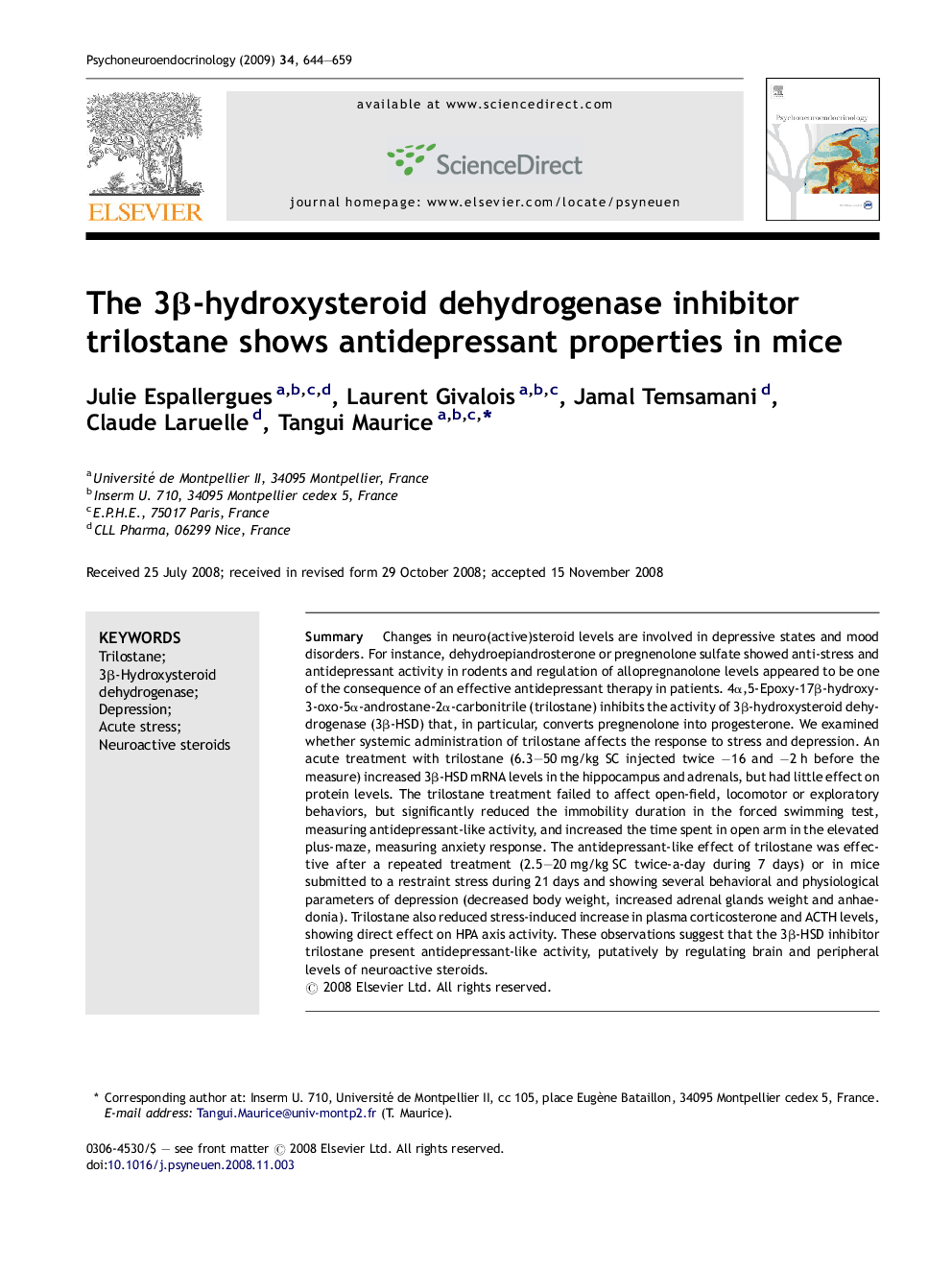| Article ID | Journal | Published Year | Pages | File Type |
|---|---|---|---|---|
| 337050 | Psychoneuroendocrinology | 2009 | 16 Pages |
SummaryChanges in neuro(active)steroid levels are involved in depressive states and mood disorders. For instance, dehydroepiandrosterone or pregnenolone sulfate showed anti-stress and antidepressant activity in rodents and regulation of allopregnanolone levels appeared to be one of the consequence of an effective antidepressant therapy in patients. 4α,5-Epoxy-17β-hydroxy-3-oxo-5α-androstane-2α-carbonitrile (trilostane) inhibits the activity of 3β-hydroxysteroid dehydrogenase (3β-HSD) that, in particular, converts pregnenolone into progesterone. We examined whether systemic administration of trilostane affects the response to stress and depression. An acute treatment with trilostane (6.3–50 mg/kg SC injected twice −16 and −2 h before the measure) increased 3β-HSD mRNA levels in the hippocampus and adrenals, but had little effect on protein levels. The trilostane treatment failed to affect open-field, locomotor or exploratory behaviors, but significantly reduced the immobility duration in the forced swimming test, measuring antidepressant-like activity, and increased the time spent in open arm in the elevated plus-maze, measuring anxiety response. The antidepressant-like effect of trilostane was effective after a repeated treatment (2.5–20 mg/kg SC twice-a-day during 7 days) or in mice submitted to a restraint stress during 21 days and showing several behavioral and physiological parameters of depression (decreased body weight, increased adrenal glands weight and anhaedonia). Trilostane also reduced stress-induced increase in plasma corticosterone and ACTH levels, showing direct effect on HPA axis activity. These observations suggest that the 3β-HSD inhibitor trilostane present antidepressant-like activity, putatively by regulating brain and peripheral levels of neuroactive steroids.
